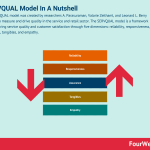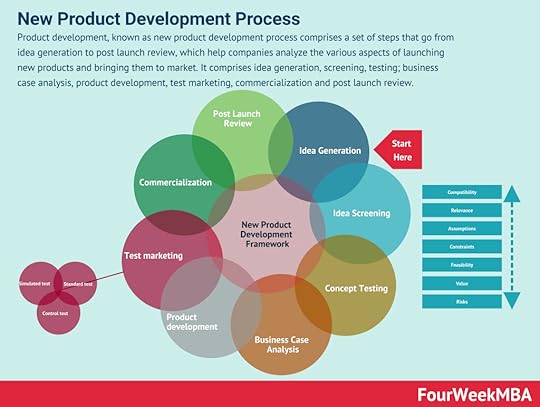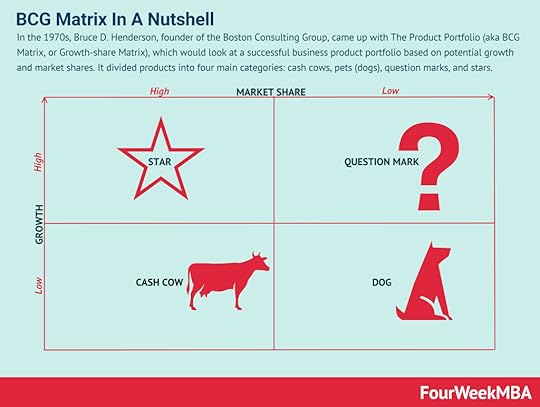What Is the SERVQUAL Model? SERVQUAL Model In A Nutshell


The SERVQUAL model was created by researchers A. Parasuraman, Valarie Zeithaml, and Leonard L. Berry in 1985 to measure and drive quality in the service and retail sector. The SERVQUAL model is a framework for measuring service quality and customer satisfaction through five dimensions: reliability, responsiveness, assurance, tangibles, and empathy.
Understanding the SERVQUAL modelIrrespective of the industry, however, most businesses need to provide some degree of customer service. This requires an understanding of how the customer’s mind works and what drives their decisions or actions.
The SERVQUAL model helps bridge the gap in perception between what the company believes it is delivering to customers and what those customers expect, want, or need during customer service.
Although developed before the digital age, the SERVQUAL model is still relevant today. With customers now using the internet to share their thoughts with a vast and captive audience, perception management has never been more important.
The five dimensions of service qualityThe SERVQUAL model considers five dimensions customers use to evaluate the quality of service they receive from a business.
These dimensions include:
Reliability – how consistently does the organization deliver a product or service on time, as described, and without error? For the customer, reliability means the organization respects commitments and honors promises.Responsiveness – how quickly can the organization respond to customer needs? Despite the negative perception it creates, some businesses ignore or evade customer service requests for no apparent reason.Assurance – does the organization inspire trust and confidence in customers with professional service, great communication skills, technical knowledge, and the right attitude?Tangibles – or the visual aesthetic of a company derived from its logo, physical store, or the look and feel of its website. Tangibles also encompass equipment, with hand sanitizing and contactless payment devices influencing the consumers of today. Furthermore, the fourth dimension also includes the physical appearance of customer service staff. How well are they dressed? Do they practice good personal hygiene? Empathy – or the ability for employees to show genuine care and concern during customer service. In other words, are those tasked with providing customer service friendly and approachable? Do they actively listen to consumer needs? Indeed, are they sensitive to consumer needs?The five gaps of service quality in the SERVQUAL modelThe SERVQUAL model defines five scenarios where businesses often fall short of customer expectations.
As mentioned in the introduction, gaps emerge when there is a discrepancy between the needs or wants of the consumer and the services the organization provides.
Each of the five gaps is summarised below:
Knowledge gap – a knowledge gap occurs when an organization has not done its due diligence on the target audience. Whether through insufficient or careless research, knowledge gaps reflect a lack of market understanding.Policy gap – these gaps occur because of a conflict between what the customer wants and what the organization provides. Policy gaps may be caused by an insufficient commitment to service quality, lack of task standardization, or inadequately described service levels.Delivery gap – or dissimilarity between the standards of customer service set out in policies and the actual delivery standard. This is a common problem in many businesses and may be the result of poor technology, poor management, low employee engagement, and role ambiguity or conflict.Communication gap – this gap describes a difference between what the company chooses to advertise about a product and what the customer actually receives. Communication gaps occur because of over-commitment or a lack of cohesion between the advertising and product development departments.Customer gap – simply, the difference between customer expectations and the experience created for them by the business. Customer gaps can be explained by revisiting the five service quality dimensions of reliability, responsiveness, assurance, tangibles, and empathy.Key takeaways:The SERVQUAL model is a framework for measuring service quality and customer satisfaction. It was created by researchers in 1985 to measure and drive quality in the service and retail sectorThe SERVQUAL model assesses five dimensions of service quality: reliability, responsiveness, assurance, tangibles, and empathy.The SERVQUAL model also defines five knowledge gaps that help explain how and why a business falls short of customer expectations. These include gaps in knowledge, policy, delivery, communication, and general customer experience.Related Business Concepts Business development comprises a set of strategies and actions to grow a business via a mixture of sales, marketing, and distribution. While marketing usually relies on automation to reach a wider audience, and sales typically leverage on a one-to-one approach. The business development’s role is that of generating distribution.
Business development comprises a set of strategies and actions to grow a business via a mixture of sales, marketing, and distribution. While marketing usually relies on automation to reach a wider audience, and sales typically leverage on a one-to-one approach. The business development’s role is that of generating distribution. The more you move from consumers to enterprise clients, the more you’ll need a sales force able to manage complex sales. As a rule of thumb, a more expensive product, in B2B or Enterprise, will require an organizational structure around sales. An inexpensive product to be offered to consumers will leverage on marketing.
The more you move from consumers to enterprise clients, the more you’ll need a sales force able to manage complex sales. As a rule of thumb, a more expensive product, in B2B or Enterprise, will require an organizational structure around sales. An inexpensive product to be offered to consumers will leverage on marketing. Product development, known as the new product development process comprises a set of steps that go from idea generation to post-launch review, which help companies analyze the various aspects of launching new products and bringing them to market. It comprises idea generation, screening, testing; business case analysis, product development, test marketing, commercialization, and post-launch review.
Product development, known as the new product development process comprises a set of steps that go from idea generation to post-launch review, which help companies analyze the various aspects of launching new products and bringing them to market. It comprises idea generation, screening, testing; business case analysis, product development, test marketing, commercialization, and post-launch review. In the 1970s, Bruce D. Henderson, founder of the Boston Consulting Group, came up with The Product Portfolio (aka BCG Matrix, or Growth-share Matrix), which would look at a successful business product portfolio based on potential growth and market shares. It divided products into four main categories: cash cows, pets (dogs), question marks, and stars.
In the 1970s, Bruce D. Henderson, founder of the Boston Consulting Group, came up with The Product Portfolio (aka BCG Matrix, or Growth-share Matrix), which would look at a successful business product portfolio based on potential growth and market shares. It divided products into four main categories: cash cows, pets (dogs), question marks, and stars. You can use the Ansoff Matrix as a strategic framework to understand what growth strategy is more suited based on the market context. Developed by mathematician and business manager Igor Ansoff, it assumes a growth strategy can be derived by whether the market is new or existing, and the product is new or existing.
You can use the Ansoff Matrix as a strategic framework to understand what growth strategy is more suited based on the market context. Developed by mathematician and business manager Igor Ansoff, it assumes a growth strategy can be derived by whether the market is new or existing, and the product is new or existing. The term “user experience” was coined by researcher Dr. Donald Norman who said that “no product is an island. A product is more than the product. It is a cohesive, integrated set of experiences. Think through all of the stages of a product or service – from initial intentions through final reflections, from first usage to help, service, and maintenance. Make them all work together seamlessly.” User experience design is a process that design teams use to create products that are useful and relevant to consumers.
The term “user experience” was coined by researcher Dr. Donald Norman who said that “no product is an island. A product is more than the product. It is a cohesive, integrated set of experiences. Think through all of the stages of a product or service – from initial intentions through final reflections, from first usage to help, service, and maintenance. Make them all work together seamlessly.” User experience design is a process that design teams use to create products that are useful and relevant to consumers. A cost-benefit analysis is a process a business can use to analyze decisions according to the costs associated with making that decision. For a cost analysis to be effective it’s important to articulate the project in the simplest terms possible, identify the costs, determine the benefits of project implementation, assess the alternatives.
A cost-benefit analysis is a process a business can use to analyze decisions according to the costs associated with making that decision. For a cost analysis to be effective it’s important to articulate the project in the simplest terms possible, identify the costs, determine the benefits of project implementation, assess the alternatives. Empathy mapping is a visual representation of knowledge regarding user behavior and attitudes. An empathy map can be built by defining the scope, purpose to gain user insights, and for each action, add a sticky note, summarize the findings. Expand the plan and revise.
Empathy mapping is a visual representation of knowledge regarding user behavior and attitudes. An empathy map can be built by defining the scope, purpose to gain user insights, and for each action, add a sticky note, summarize the findings. Expand the plan and revise.  Perceptual mapping is the visual representation of consumer perceptions of brands, products, services, and organizations as a whole. Indeed, perceptual mapping asks consumers to place competing products relative to one another on a graph to assess how they perform with respect to each other in terms of perception.
Perceptual mapping is the visual representation of consumer perceptions of brands, products, services, and organizations as a whole. Indeed, perceptual mapping asks consumers to place competing products relative to one another on a graph to assess how they perform with respect to each other in terms of perception.  Value stream mapping uses flowcharts to analyze and then improve on the delivery of products and services. Value stream mapping (VSM) is based on the concept of value streams – which are a series of sequential steps that explain how a product or service is delivered to consumers.
Value stream mapping uses flowcharts to analyze and then improve on the delivery of products and services. Value stream mapping (VSM) is based on the concept of value streams – which are a series of sequential steps that explain how a product or service is delivered to consumers.Read the remaining product development frameworks here.
Read Next: SWOT Analysis, Personal SWOT Analysis, TOWS Matrix, PESTEL
Learn also:
Occam’s RazorSpeed-Reversibility MatrixGrowth-Share MatrixAnsoff MatrixMain Free Guides:
Business ModelsBusiness StrategyBusiness DevelopmentDigital Business ModelsDistribution ChannelsMarketing StrategyPlatform Business ModelsTech Business ModelThe post What Is the SERVQUAL Model? SERVQUAL Model In A Nutshell appeared first on FourWeekMBA.



